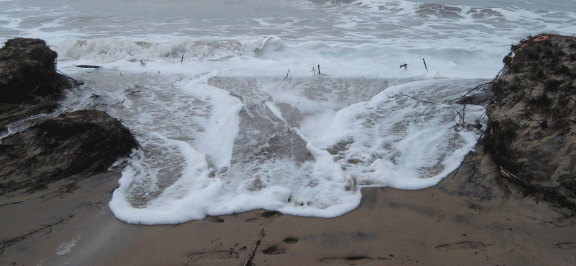Bhubaneswar: Following the nod of the State Cabinet, the Water Resources Department has notified the scheme titled as “Cyclone Resilient Saline Embankment Projects”.
The scheme will be executed during the period from financial year from 2022-23 to 2024-25 with an outlay of Rs 763.48 crore.
The objective of the project is to raise and strengthen the saline embankments to sustain the impact of severe cyclones in order to protect the adjacent landmass and habitation from flood, saline ingress and tidal surge of Bay of Bengal in four coastal districts Balasore, Bhadrak, Kendrapara and Puri.
It will help to withstand cyclonic storms of higher magnitude such as high wind speed and sea storm surges; mitigate floods by keeping flood waters within channel boundary; and protect public infrastructures like school, hospital, anganwadi centre, utilities like electricity & road communication from extreme storm during cyclone.
The projects would also protect nearby habitation, agricultural land from saline ingress. It will also help in early restoration of all forms of economic activities in the region after the cyclonic event.
The State Government has planned for raising and strengthening of 36 saline embankments measuring total length of 198.81 km to cyclone resilient standard to sustain the impact of very severe cyclone with speeds upto 250 km/hr and to protect the adjacent landmass and habitation from floods, saline ingress and tidal surge of Bay of Bengal in Balasore, Bhadrak, Kendrapara and Puri.
According to sources, upon completion of the projects, about 21,690 hectares of agricultural land will be protected from flood and saline ingress and 2,92,500 people in 136 villages in the above districts will be benefitted.
Due to raising & strengthening of embankments, road communication, scope for fishing & eco-tourism will be improved, the officials said.
The Water Resources Department has planned to make an expenditure of Rs 290.60 crore during the current year while Rs 305.96 crore has been provisioned for 2023-24, Rs 166.92 crore for 2024-25 and Rs 763.48 crore for 2025-26.
The Department has also notified the scheme–“Community Harnessing and Harvesting Rainwater Artificially from Terrace to Aquifer (CHHATA)” for conservation of rainwater.
The scheme will be implemented in 29,500 private buildings and 1,925 government buildings covering water-stressed 52 blocks and 27 urban local bodies (ULBs) of the State for a period of five financial years from 2022-23 to 2026-27 with a budget outlay of Rs 270 crore.
Target is set to harvest 373.52 crores litres of water roughly on completion of the scheme.
The average cost of rooftop rainwater harvesting system for Government buildings in 27 ULBs has been considered @ Rs.4.31 lakhs per building. The average cost of rooftop rainwater harvesting system for Government buildings in 52 Blocks (Rural) has been considered @ Rs3.06 lakhs per building.
Any person, in the specified ULBs, owning a building having a roof area less than 200 Sqm and not more than three floors will be eligible to apply under the scheme.
There is a subsidy provision of Rs 55,000 or 50 per cent of the cost of the roof top rainwater harvesting systems (RRHS), whichever is less in this scheme to encourage the public to adopt the scheme in their buildings.The maintenance cost of these systems will be borne by the building owners. The RRHS should have a suitable recharge unit (well) which is compulsory under the Scheme for claim of subsidy


